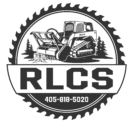The Cost of Land Clearing in Oklahoma: Factors That Affect Pricing
Clearing land in Oklahoma is often a necessary first step in site preparation for new construction, farming, or recreational use. However, understanding the costs involved can be tricky due to the various factors that influence pricing. From the type of vegetation and land size to the equipment used, each element plays a crucial role in determining the overall expenses. If you’re looking to clear your land efficiently and cost-effectively, it’s essential to grasp the nuances of land clearing costs in Oklahoma. This guide breaks down the key factors impacting pricing, helping you make an informed decision.
Understanding Land Clearing Costs in Oklahoma
Land clearing is not just about removing trees and shrubs; it involves multiple processes like debris removal, grading, and sometimes even soil testing. These tasks contribute to the overall expense, making it essential to assess your needs thoroughly before committing to any service provider. On average, land clearing costs in Oklahoma can range from $1,200 to $5,000 per acre, depending on various factors. However, this price range can fluctuate based on the specifics of your project.
Key Factors Influencing Land Clearing Costs in Oklahoma
When it comes to estimating land clearing costs in Oklahoma, several factors can significantly impact the pricing. Understanding these can help you better plan your budget and ensure you get the best value for your investment.
Size of the Land
One of the most obvious factors affecting land clearing costs is the size of the area that needs to be cleared. The larger the plot, the more time, labor, and equipment are required, which directly impacts the cost. For smaller plots, you may pay a flat rate, but larger areas often involve per-acre pricing, which can vary significantly based on the density of vegetation and topography.
For example, clearing a half-acre lot for residential purposes might cost around $1,200 to $2,500, whereas clearing a multi-acre farm or commercial site could run well into the thousands per acre. Larger projects often benefit from economies of scale, which can slightly reduce the per-acre cost.
Type of Vegetation and Density
The type and density of vegetation on your land are major determinants of the clearing cost. Land covered in thick woods, large trees, or stubborn brush will cost more to clear than land with sparse vegetation or grassland. Removing large trees not only requires heavy machinery but also specialized skills, which increases labor costs.
Dense forests often require more extensive work, including tree removal, stump grinding, and hauling away large quantities of debris. In contrast, clearing open fields or light brush may involve simple mowing and minimal debris disposal, resulting in lower costs.
Terrain and Accessibility
The terrain and accessibility of your land play a significant role in land clearing costs. Steep slopes, rocky ground, or wetland areas are more challenging to clear and may require specialized equipment and additional labor, thereby driving up costs.
Furthermore, if the land is difficult to access—perhaps due to narrow roads or obstructed pathways—extra costs may be incurred to transport machinery and materials to the site. Some service providers charge additional fees for difficult-to-access areas, so it’s essential to discuss these potential costs upfront.
Equipment and Techniques Used
Different types of equipment and techniques are used in land clearing, depending on the project’s specifics. The kind of machinery required will directly affect the overall cost. Common equipment includes bulldozers, excavators, chainsaws, and brush hogs, each with its associated operational costs.
For heavily wooded areas, heavy-duty machinery like mulchers or tree shears may be necessary, adding to the expense. In some cases, controlled burning might be an option, but this technique requires permits and skilled oversight to ensure safety, potentially adding to the cost.
Permits and Regulations
In Oklahoma, land clearing often requires permits, especially if the work involves tree removal, burning, or altering waterways. Permit costs can vary depending on the county and the scope of work. Before starting your project, it’s wise to consult local authorities to determine what permits are needed and their associated costs.
Failure to obtain the necessary permits can lead to fines or delays, adding unexpected costs to your land clearing project. Additionally, adherence to environmental regulations, such as protecting endangered species or wetlands, may require special considerations that can impact pricing.
Debris Removal and Disposal
After clearing the land, you’ll need to deal with the debris, which can include tree trunks, branches, brush, and rocks. Disposal methods vary, from on-site burning to hauling away debris to a landfill or recycling center. Each option has its costs, and some may be influenced by local regulations regarding waste disposal.
For instance, if you choose to haul debris to a landfill, you’ll need to factor in tipping fees, transportation costs, and labor. On the other hand, recycling or repurposing materials, such as turning tree trunks into firewood or mulch, can sometimes offset some of the clearing costs.
Site Preparation and Grading
Once the land is cleared, additional site preparation work, such as grading, leveling, or soil testing, may be required, especially for construction projects. Grading ensures the land is even and suitable for building, while soil testing checks for stability and suitability for future use. These steps add to the overall cost but are often necessary for the project’s success.
Grading costs in Oklahoma typically range from $0.40 to $2.00 per square foot, depending on the complexity of the terrain. For large-scale projects, this can add a substantial amount to your total expenses, so it’s crucial to include these potential costs in your initial budget.
Labor Costs in Oklahoma
Labor is another significant factor in determining land clearing costs. Skilled labor for operating heavy machinery, cutting down trees, and managing the clearing process will inevitably add to your expenses. Labor rates can vary depending on the complexity of the work and the experience of the crew.
In Oklahoma, land clearing labor rates generally range from $50 to $150 per hour, depending on the job’s requirements. More complicated tasks, like removing hazardous trees or working on uneven terrain, may incur higher rates.
Additional Services That May Impact Pricing
Land clearing often involves more than just removing vegetation. Depending on your specific needs, additional services such as erosion control, drainage solutions, and landscaping can further affect the overall cost.
Erosion Control and Drainage Solutions
Erosion control measures may be necessary if your land is prone to water runoff or soil erosion. This can involve installing silt fences, creating berms, or applying mulch to protect the soil. Drainage solutions, such as installing culverts or trenches, may also be required to manage water flow on the property.
Landscaping and Seeding
If your goal is to prepare the land for agricultural use or create a landscaped area, additional costs for seeding, planting, and landscaping might be involved. Seeding can stabilize the soil and prevent erosion, while planting trees or shrubs can add value and aesthetics to your property.
How to Find Affordable Land Clearing Services in Oklahoma
Finding the right land clearing service provider is crucial to keeping your costs manageable. Here are some tips to help you find affordable land clearing services in Oklahoma without compromising on quality:
- Get Multiple Quotes: Always get at least three quotes from different providers to compare pricing and services. This helps you understand the market rate and choose the best option for your budget.
- Check Reviews and References: Look for companies with positive reviews and ask for references from past clients. A reputable company will be transparent about their experience and costs.
- Bundle Services: Some companies offer discounts if you bundle services like land clearing, grading, and debris removal. Ask about package deals to save on overall costs.
- Negotiate: Don’t be afraid to negotiate pricing, especially if you’re working on a large-scale project. Many companies are willing to adjust their rates to secure your business.
FAQs
What is the average cost of land clearing in Oklahoma?
The average cost of land clearing in Oklahoma ranges from $1,200 to $5,000 per acre, depending on factors like vegetation density, terrain, and equipment used.
Do I need a permit for land clearing in Oklahoma?
Yes, permits are often required for land clearing in Oklahoma, especially for activities like tree removal, burning, or altering waterways. Check with local authorities for specific requirements.
How does the type of vegetation affect land clearing costs?
Thicker vegetation, such as dense forests or large trees, requires more labor and specialized equipment, which increases the overall cost compared to clearing light brush or grassland.
Can land clearing be done in the winter in Oklahoma?
Yes, land clearing can be performed year-round in Oklahoma. However, winter conditions may affect accessibility and equipment operation, potentially increasing costs.
What is the cheapest way to clear land?
The most cost-effective method depends on the type of vegetation and land use. For minimal brush, mowing or mulching might be sufficient. However, for heavily wooded areas, mechanical clearing is usually necessary despite higher costs.
Is it cheaper to clear land yourself?
DIY land clearing can be cheaper but comes with significant risks, including potential damage to property and personal injury. Hiring professionals ensures safety and compliance with regulations.
Conclusion
The cost of land clearing in Oklahoma can vary widely based on numerous factors such as land size, vegetation type, terrain, and required equipment. Understanding these factors helps you better estimate your project’s expenses and plan accordingly. Whether you are preparing a site for construction, agriculture, or recreational use, finding a reliable and affordable land clearing service provider is key to managing costs effectively. By doing your research, obtaining multiple quotes, and knowing what to expect, you can make


